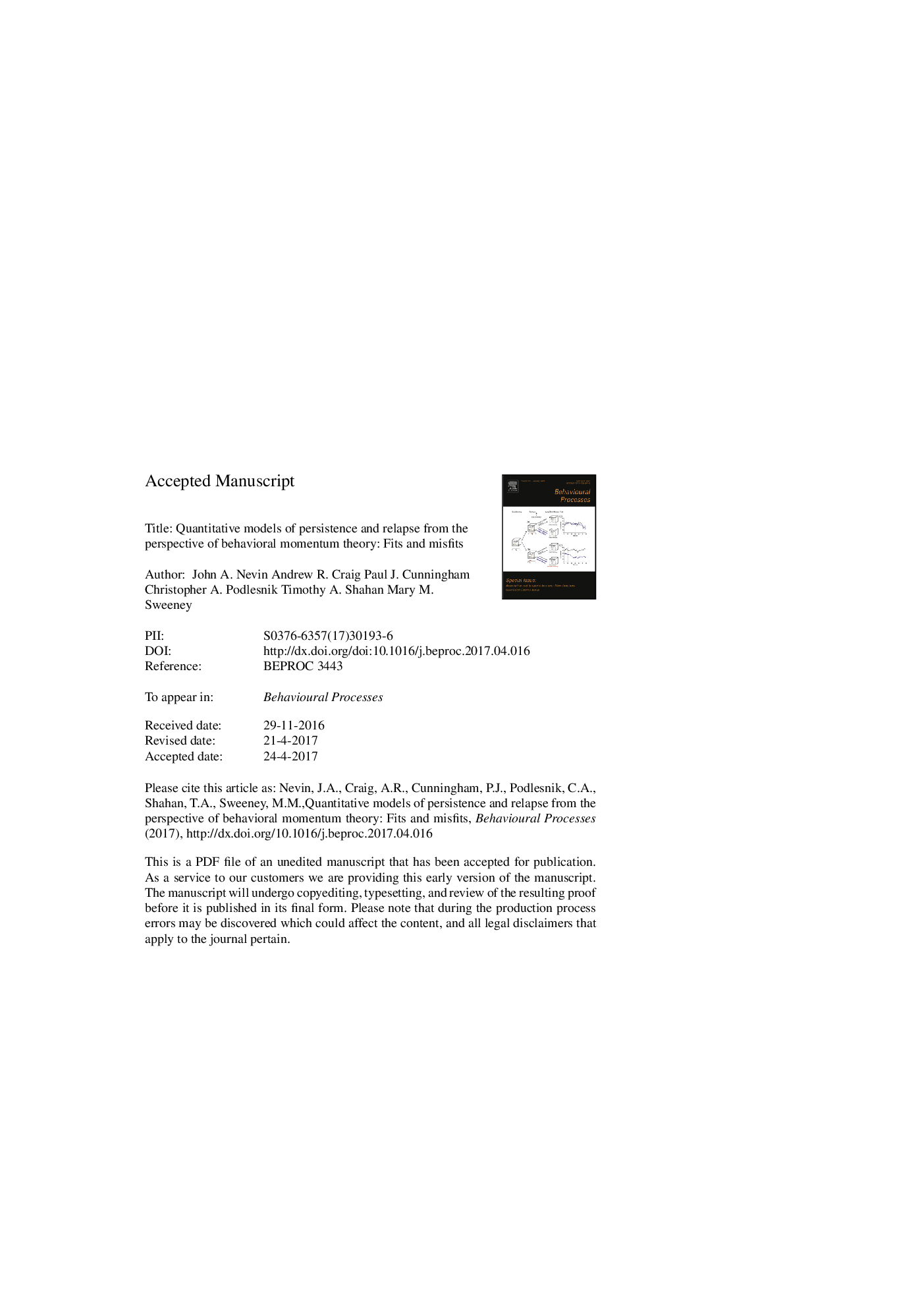| Article ID | Journal | Published Year | Pages | File Type |
|---|---|---|---|---|
| 5539624 | Behavioural Processes | 2017 | 38 Pages |
Abstract
We review quantitative accounts of behavioral momentum theory (BMT), its application to clinical treatment, and its extension to post-intervention relapse of target behavior. We suggest that its extension can account for relapse using reinstatement and renewal models, but that its application to resurgence is flawed both conceptually and in its failure to account for recent data. We propose that the enhanced persistence of target behavior engendered by alternative reinforcers is limited to their concurrent availability within a distinctive stimulus context. However, a failure to find effects of stimulus-correlated reinforcer rates in a Pavlovian-to-Instrumental Transfer (PIT) paradigm challenges even a straightforward Pavlovian account of alternative reinforcer effects. BMT has been valuable in understanding basic research findings and in guiding clinical applications and accounting for their data, but alternatives are needed that can account more effectively for resurgence while encompassing basic data on resistance to change as well as other forms of relapse.
Related Topics
Life Sciences
Agricultural and Biological Sciences
Animal Science and Zoology
Authors
John A. Nevin, Andrew R. Craig, Paul J. Cunningham, Christopher A. Podlesnik, Timothy A. Shahan, Mary M. Sweeney,
